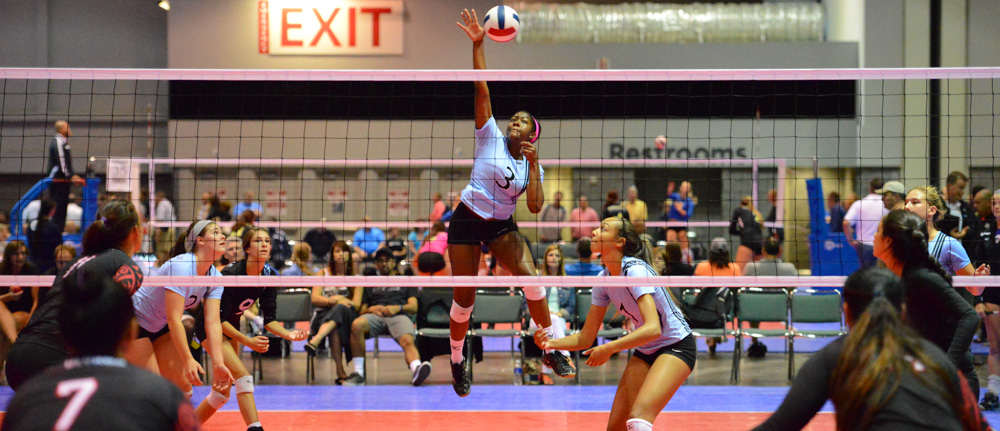

The bench press is similar to the overhead press, albeit in a different plane. While the bench press is less volleyball-specific than the overhead press, it is an excellent exercise for building upper body strength and shoulder stability. We include it specifically because many female student athletes are unable to perform pushups with proper shoulder mechanics, and the bench press allows you to learn to press safely at lighter weights while building the strength to perform a pushup using good form.
Grip for the bench press is slightly wider than the overhead press, and has two critical elements:
1. The upper arm/humerus should make an angle of 30 to 45 degrees with the side of the chest when viewed from above. For maximum shoulder stability, the elbows should not flare out, and the upper arm/side angle should not exceed 45 degrees.

2. The forearms should remain approximately vertical at all times. From the arms' perspective, the bench press is simply flexing and extending the elbows to lower and raise the bar. The position of the forearms and wrist should not change.
In addition to our five common elements explained above, setup for the bench press incorporates a tight upper back and a slight to moderate global arch in the lower back while getting positioned on the bench. Note that this arch does not move during the lift – it is established in a position of stability during the setup, and maintained throughout the lift with tension in the glutes and abdominal muscles.
Setup for the bench press begins with establishing the proper grip, and positioning on the bench to establish both a global arch and tight upper back. You might find it helpful to first lie down on the bench, position your hands on the bar, and then pull yourself up to the bar so that you can touch the bar with your forehead. From this position, pull your shoulder blades together and tighten the muscles of your upper back before placing your tense upper back straight down onto the bench.
When establishing a "tight back", visualize your completed bench press repetition as a triangle pointing downwards -- your shoulder blades and upper back are concentrating force to the point of being the apex of the triangle, and your extended arms are the two legs of the triangle supporting the bar above.
By pulling your forehead up to the bar, tensing you back, and then lowering your back straight down while keeping your glutes tense and on the bench the entire time, you should create a slight arch in your lower back such that your partner should be able to see between your lumbar spine and the bench.

Note that your lower body is also engaged in the bench press. Your feet should be on the floor in roughly your squat position, with your hips generating external rotation torque.
Once your grip and arch are established, and body is fully engaged, you should again remember to generate torque in your shoulders by breaking the bar before unracking. You then push the bar straight off the rack by straightening your arms and engaging your latissimus dorsi ("lats"), and pause with the bar directly above the bottom of your sternum/lower chest. At this point you should lower the bar straight down in a controlled fashion to your lower sternum before pushing the bar straight up again. When you are finished, simply guide the bar backwards into the rack.
The translation from a successful bench press to a pushup is simple. Your hand position should mirror the position of your grip on the bar, with the same criteria of the upper arm/side angle between 30 and 45 degrees, and the forearm remaining vertical throughout the pushup. You should think of "screwing your hands into the ground" as a cue to generate torque during pushups just as you "break the bar" during the bench press. To protect your shoulders, guard against flaring your elbows to complete the exercise.
Core strength and stability are equally important in a pushup – a pushup does not use an arched lower back, but instead you should maintain a neutral spine with fully engaged glutes and abdominal muscles throughout. If you are unable to perform a complete pushup, it is better to elevate your upper body to complete a good pushup with your body in a plank position than to compensate by pushing up on your knees.
The cues for the bench press are as follows: